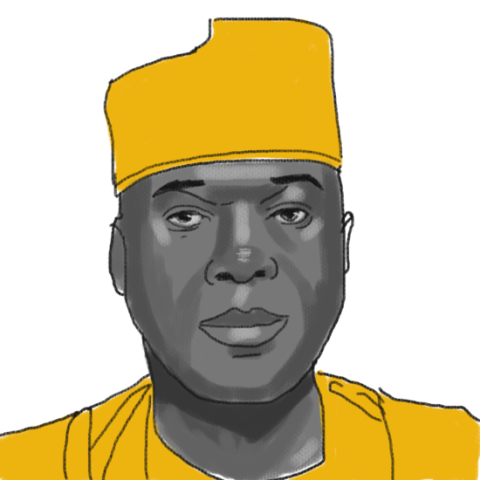
The Federal Government has appealed to the Supreme Court to restore all the 18 false assets declaration and other related charges instituted against the Senate President, Dr. Bukola Saraki, but which were dismissed by the Code of Conduct Tribunal in June 2017.
In its December 12, 2017 judgment, the Abuja Division of the Court of Appeal had restored three out of the 18 counts but affirmed the decision of the CCT with respect to the rest of the 15 counts on the grounds of lack of evidence.
Saraki had since filed a seven-ground notice of appeal against the part of the Court of Appeal’s judgment restoring the three counts.
But the Federal Government on Tuesday filed a counter-appeal of 15 grounds against the part of the judgment which affirmed the dismissal of the 15 counts.
The CCT had in its June 14, 2017 ruling on the no-case submission which Saraki filed after the prosecution concluded its case, dismissed the entire 18 counts on the grounds of lack of credible evidence.
The Federal Government had, through its prosecuting counsel, Mr. Rotimi Jacobs (SAN), appealed against the CCT ruling.
Delivering a unanimous judgment on December 12, 2017, the three-man panel of the Court of Appeal headed by Justice Tinuade Akomolafe-Wilson restored three out of the 18 dismissed charges and ordered Saraki to enter his defence before the CCT in respect of the three counts.
But the Court of Appeal affirmed the CCT’s ruling affirmed the dismissal of the rest of the 15 counts as ordered by the CCT.
The Federal Government’s appeal has filed a cross-appeal complaining against part of the Court of Appeal’s judgment in respect of counts 1, 2, 3, 7 to 18.
In its appeal, the prosecution led by Jacobs urged the Supreme Court to order Saraki to enter his defence in respect of all the 18 counts.
The government asked the Supreme Court to set aside the part order of the Court of Appeal, upholding the ruling of the CCT in respect of the 15 voided counts.
It also sought the Supreme Court’s order remitting the entire case back to the CCT for Saraki to enter his defence in respect of the entire 18 counts.
The government faulted the Court of Appeal’s decision that the prosecution failed to establish a prima facie case in relation to the voided 15 counts.
It argued that by the decision, the appellate court failed to give effect to paragraphs 11(2), 11(3) and 13 of Part 1, Fifth Schedule of the Constitution that placed the burden on every defendant answering to such charges to prove their innocence.
The appellant stated that “the Court of Appeal misinterpreted and misapplied” paragraph 1, Fifth Schedule to the Constitution to the facts of the case when it held that once a statement contained in the Code of Conduct Form filled by a public officer is found to be untrue, he must be prosecuted for any false declaration in the form without any burden of proof on the said public officer”.
It argued that by the provision of the law, the duty of the prosecution was merely to prove that the public officer concerned made a declaration, that the declaration had been found to be false by the officer who verified it and then, the onus or burden of proof would then shift to the defendant to prove that the declaration was not false.
It added, “The Court of Appeal, contrary to the settled position of the law, as to what amounts to a prima facie case, wrongly considered the credibility of the witnesses of the prosecution and attached weight to evidence adduced by the prosecution.”

“The Court of Appeal went beyond the consideration of a no-case submission in its judgment by comprehensively evaluating the evidence adduced by the prosecution and attaching weight to them.
“The Court of Appeal, while wrongly affirming the finding os the lower tribunal that the testimony of PW3 amounted to hearsay, also unjustifiably extended the scope of the finding by classifying the testimonies of other prosecution witnesses as hearsay when that was not made an issue having regards to the grounds of appeal.”
The Federal Government’s appeal also faulted the Court of Appeal decision that the evidence by PW1 and PW3, in relation to the voided counts, amounted to documentary hearsay, and therefore inadmissible
It argued that oral testimony of the two witnesses were based on the documents recovered during the investigation, particularly from public officers and such documents, certified by those public authorities, are presumed genuine until the contrary if proved.
It also faulted the Court of Appeal’s finding that most of the prosecution’s evidence amounted to hearsay and that the necessary witnesses were not called.
It argued that it was not enough for the appellate court to allege that the prosecution did not call a particular witness, the defence must show the relevance of the evidence of the witness to any of the ingredients of the offences charged.
The cross-appellant, in further faulting the Court of Appeal decision, contended that it was wrong for the court to hold that the prosecution did not establish a prima facie case in respect of the voided 15 counts.
It contended the prosecution adduced sufficient evidence in proof of the counts to warrant calling on the defendant to enter his defense.